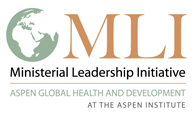Reducing barriers to health care through health equity funds
 Dr. Sania Nishtar Photo Credit Heartfile |
Cost for health services has been labeled as one of the three impediments to seeking healthcare in the World Health Report, 2010. And the problem is likely to increase as more than 100 million people become impoverished and a further 150 million face severe financial hardship as a result of health cares payments, globally.
However, using health equity funds to finance waivers through cash transfers can protect the poor against medical impoverishment, especially when the insurance option is unavailable, unviable or does not fully cover healthcare costs. MLI Reproductive Health Task Force Member Dr. Sania Nishtar recently shared with MLI Director Rosann Wisman, how her organization, Heartfile Health Financing, is doing just this in Pakistan.
More than 60% of people in Pakistan pay out-of-pocket for healthcare. The poor do not have the means to pay for high-cost treatment and often spend catastrophically, become indebted and are pushed into the medical-poverty trap. In order to avoid this trap, many also forego treatment as statistics show that healthcare costs are the most common cause of economic shocks faced by households.
Heartfile Health Financing (HHF) combats these shocks with a program that has three components: a technology platform, a system of validating poverty and prioritizing patients, and a health equity fund.
The system enables both poor patients as well as doctors on their behalf in pre-registered hospitals to seek financial help. Requests for assistance can be sent through multiple channels—SMS, fax, telephone, and by letter. A main factor that makes HHF effective is Pakistan telecommunications infrastructure.
By gathering information from doctors’ and HHF volunteers’ assessments as well as an online validation of poverty status by Pakistan’s National Database Registration Authority (NADRA), HHF is able to fully establish poverty and eligibility status. The system is able to categorize patients by urgency level of treatment required and financial need. The cases that are deemed eligible are supported through Heartfile’s Health Equity Fund, which is maintained by philanthropic contributions.
The system has a strategic significance for Pakistan where there is a dire need to broaden social protection systems to combat increasing poverty trends. HHF is providing increased visibility of social protection systems to donors and allows donors transparency throughout the process. Donors are able to view the use of their funds on a transaction basis, instruct specific use of their funds; view the administrative costs incurred and, above a certain category, request an audit of any transaction.
Heartfile Health Financing is shaping the current state of health financing in Pakistan. More on the HHF strategy can be found here, as well as on the website. A short documentary on the project is also available.
Keyword Search
MLI works with ministries of health to advance country ownership and leadership. This blog covers issues affecting the ministries and the people they serve.
Connect with Us
![]()
![]()
Categories
Blogs We Like
- Africa Can End Poverty
- Africa Governance Initiative
- Behind the Numbers
- CapacityPlus
- Center for Global Health R&D Policy Assessment
- Center for Global Development: Global Health Policy
- Center for Health Market Innovations
- Global Health
- Global Health Hub
- Global Health Impact
- The New Security Beat
- PAI Blog
- RH Reality Check
- Save the Children
- Transparency and Accountability Program
Contact Us
Please direct all inquiries to

Comments